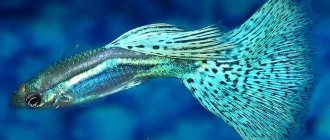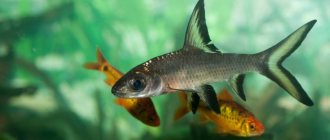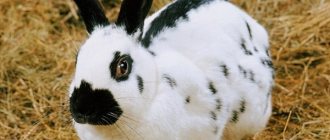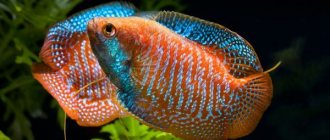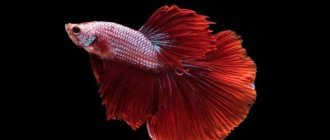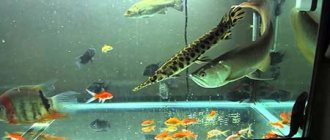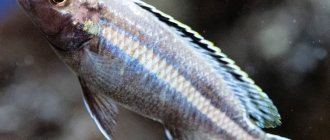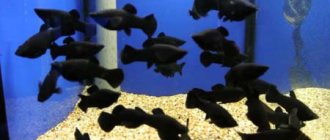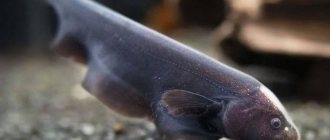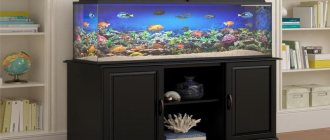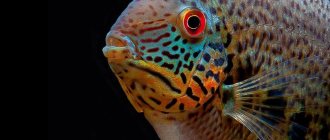In this article we will talk about probably the most popular endemic of Lake Malawi from the Mbuna group - Labidochromis Yellow! Swahili terms "Mbuna" - literally "dweller of the rocks". And “Utaka” means “life in open water.” Swahili is one of the official languages of Malawi, Tanzania and Kenya (on whose territory Lake Malawi is located).
It is worth noting that there are quite a lot of color variations of Labidochromis: from white to blue, but it is this yellow color that aquarists love most. These fish have earned popular love not only for their bright colors, but also for their unpretentious keeping, resistance to diseases, interesting behavior and absolutely unproblematic breeding.
Let's take a closer look at these amazing fish.
Latin name: Labidochromis caeruleus "yellow";
Russian name: Labidochromis yellow;
Synonyms: Yellow, labidochromis yellow, golden, yellow, labidochromis yellow, labidochromis lemon, labidochromis hummingbird;
Habitat: Africa, lake endemics. Malawi, Mbuna group. They live in the waters of the western coast of the lake along rocky, coastal coastlines, at a depth of 10-50 meters - in shallow water. Despite its wide distribution in the lake, wild specimens of labidochromis are very rarely found with a yellow color. Yellow forms of fish are found only in the northern part of the lake, between Lev and Charo bays.
How long does Labidochromis yellow live: 7-8 years, see how long other fish live - here .
Description
The size of labidochromis in nature is 10 cm, in an aquarium - 8 cm. They rarely reach 12 cm. The relatively peaceful yellow cichlids were kept in glass tanks quite recently, but quickly became favorites of aquarists.
Appearance
The yellow cichlid has a bright yellow color. The body shape is elongated, the eyes are large. The yellow fins are edged with a black stripe. The dorsal fin is pointed. Labidochromis sometimes has a vertical dark stripe on its eyes.
Lifespan
Labidochromis lives up to 10 years in good conditions.
Labidochromis species
There are several types of labidochromis, each of which has its own distinctive characteristics.
Labidochromis Yellow (Labidochromis caeruleus)
The most popular of the Lake Malawi cichlids due to its bright color and relatively peaceful nature. The fish deserves this name for its rich lemon body color. The fin on the back is decorated with a black stripe that attractively contrasts with the body color, while the anal and fin on the belly are completely black.
This species is designated as a dwarf cichlid because its body length is no more than 10 cm.
An aquarium with a volume of 120 liters or more, decorated with many stones and grottoes, can be used to keep 2-5 individuals. The yellow cichlid represents the most peaceful group of Mbuna: it does not fight for territory and gets along well with many of its relatives. Rarely shows aggression, and then only towards fish with identical color or during the spawning period.
An aquarium of 120 liters or more can be used to keep 2-5 individuals of this species
Quite peaceful with other neighbors when living in a common aquarium. The eggs are gestated in the female's mouth.
Labidochromis sp. Hongi
While still a rare cichlid among aquarists, it is quickly becoming popular due to its amazing coloration. The species is little studied, receiving its name from the place where it was first discovered.
Lives in the northeastern parts of Lake Malawi, at the intersection of Lundo Island and the large city of Liuli. Living conditions are similar to the more studied conditions of individuals of the Mbuna group.
Males are blue or white-blue in color, and the forehead, occipital and dorsal fins are yellow to orange. Females and juveniles are less brightly colored. To keep just one pair of fish, you need an aquarium of at least 100 liters. Reproduction is easy; eggs are brooded in the mouth.
A little-studied species that received its name from the place where it was first discovered
The color morph is often referred to as Kimpuma or Kimpuma red.
Content
The fish has increased requirements for living conditions. The hummingbird cichlid needs clean water with stable hydrochemical composition and temperature. Keep the yellow in a harem, where there are 3–6 females per male.
Aquarium
The minimum tank volume for three individuals is 120 liters. In a larger aquarium (from 300 liters) you can place a whole flock of yellowfish, in which the hierarchy and natural habits of the fish can be traced. In design, imitate the natural habitat as much as possible, use:
- grottoes;
- caves;
- piles of stones.
Wood is not an attribute of natural yellow ponds, but fish look impressive against the backdrop of driftwood and decorations made of coconut shells.
Water parameters
| Temperature | 23–28 degrees |
| Acidity | 7–8 pH |
| Rigidity | 10–18 dGh |
| Water movement | strong and moderate |
Change water by 15–20% of the total volume. Use settled water and periodically check the liquid for harmful impurities.
Plants
Yellows damage most plants. Cryptocorynes and anubias are suitable for landscaping; cichlids do not bother them, and the plants themselves are unpretentious. Vallisneria is an addition to the diet.
Priming
At the bottom, scatter marble or coral chips, small pebbles or other fine soil. Choose a dark color.
View this post on Instagram
New fish! Labidochromis Caeruleus golden. #labidochromis #caeruleus #golden #gold #yellow #cichlids #cichlid #cichlidtank #cichlidkeeper #cichlidsofinstagram #ciklider #ciklid #ncs #fishfam #fishroom #fish #fishtank #fishtanks #lakemalawi #malawi #lake #sjö #africa #charo #chisi #point #mbunas #mbuna #karlskrona #lyckeby
A post shared by Jimmy Pedersen (@jimmy_pedersen_fishroom) on Jun 24, 2022 at 1:07pm PDT
Equipment
You will need a standard set of equipment:
- Filter. High-quality filtration is provided by an external filter. It is allowed to create a strong water pressure during the filtration process, this is common for yellow cichlids.
- Compressor. Needed to saturate water with oxygen.
- Heater. Ensures maintenance of a comfortable water temperature.
Equipment needed:
- thermometer;
- siphon for cleaning;
- net for catching fish.
Additionally, you can purchase a feeder to make the feeding process more convenient.
Lighting
Select a lamp based on the needs of the plants. Create moderate lighting. The preferred values of the color spectrum are blue and red. Make sure that the lamp does not overheat the water.
Feeding
Labidochromis are omnivores; in nature they feed on insects, small crustaceans, algae and plants.
View this post on Instagram
Essenzeit?
A post shared by Acei? ⛰Mbuna⛰ ? Labidochromis (@malawi_cichliden) on Oct 10, 2022 at 9:15am PDT
Suitable for creating a diet:
- daphnia;
- Cyclops;
- Artemia;
- shrimps;
- chopped meat;
- mussels;
- peeled peas;
- cereals;
- carrot;
- duckweed;
- spinach and lettuce leaves;
- plant-based dry food.
Serve tubifex, bloodworms and other foods high in protein little by little and with caution. Labidochromis are prone to obesity and protein poisoning.
Treat live food in a weak solution of methylene blue or by freezing.
The risk of introducing parasites into the pond is greatly reduced. The ideal option would be homemade frozen food. Feed Labidochromis small portions 1-2 times a day. Remove excess food in a timely manner using a net.
Compatibility
Labidochromis caeruleus are considered peaceful cichlids. But, like all cichlids, they are characterized by a territorial nature and aggression during spawning. Compatibility with American cichlids is low, because the fish come from a different habitat, have different types of food and the required living conditions. Avoid proximity to species of yellow flowers; labidoromis can show aggression towards them, mistaking them for males of their own species. Place African cichlids of the same size and other peaceful fish in the same aquarium:
- cinotilapia afra;
- blue dolphin;
- aulonocar;
- lamprologus;
- corridors;
- pseudotropheus Aki;
- thoracatums;
- ancistrus.
Slow species, predators and small aquarium fish are bad neighbors for yellowfish. Unsuccessful examples for sharing:
- neons and tetras;
- viviparous fish;
- goldfish;
- parrot fish;
- zebrafish;
- astronotus.
Interesting Facts
Cerulius are very tenacious. They show amazing ingenuity in matters of safety and are able to survive in the same body of water even with larger predators.
Labidochromis willingly dig up the bottom in search of food . Sometimes they are able to move not too heavy decorative elements simply by pushing them.
If labidochromis fry are kept in a pond with plants, then there is a high probability that when they grow up, they will not eat the bushes.
Cerulius are very beautiful and unpretentious fish. They are easily adaptable and do not require special conditions , so even a novice aquarist can handle them.
Breeding
Reproduction of yellow yellows is easy to stimulate and often occurs without intervention. Breeding takes place in a general aquarium or in a spawning tank, where a couple of yellowfish are placed. The fry have a high survival rate even in a community aquarium.
Differences between a male and a female
Sexual maturity occurs at 7–8 months. Signs by which you can distinguish a male from a female:
- The coloring of yellow males is more intense, the eyes have dark spots;
- the edging on the fins is more pronounced;
- The pelvic fins are dark; the female can be identified by the yellow pelvic fins.
Spawning
Stimulate spawning by raising the temperature a couple of degrees. Labidochromis form stable pairs and prepare a nest in the ground where they will lay eggs. Sometimes females spawn on decorations and stones. In young labidochromis, the clutch consists of 8–10 eggs, in adult fish - up to 30 eggs. The female takes the clutch into her mouth for incubation. After three weeks the fry hatch. The female becomes emaciated because she does not feed during the incubation period. Parents continue to care for the fry, protecting them from danger.
Feed the young:
- living dust;
- artemia naupili;
- Cyclops;
- crushed with adult food.
Range and Habitat
Labidochromis Yellow (L. caeruleus Yellow) distribution area of Lake Malawi.
Africa: Endemic to the central and western coastal region of Lake Malawi in East Africa. Found in the northern part of the lake, between Kaiser Point and Lando, and from Chirmbo Point to Charo. The "electric yellow" color morph has only been recorded on the western side of Nkhata Bay between Charo and Lion Bay.
Yellow (L. caeruleus Yellow), habitat, Lion's Bay.
It lives in the lake in two different biotopes, occurring in rocky areas and also in areas covered with Vallisneria aethiopica vegetation. They are found at the greatest depth of all species of the genus Labidochromis, found at depths of 10 to 30 meters, rarely found at depths less, usually they can be found at a depth of about 20 meters.
Yellow (L. caeruleus Yellow), habitat, Lion's Bay, biotope.
In the wild, they live either alone or in pairs and are a mouth-incubating species that forms a matriarchal family. Depending on their habitat, they feed primarily on lithophilous (rock-loving) invertebrates, mollusks and snails, and also feed on fish and insects.
One population was found in shallow water, where it lives mainly in thickets of Vallisneria and preys on snails.
Diseases
Under good conditions, labidochromis does not get sick. With infrequent aquarium maintenance and incorrect water parameters, the yellow cichlid is susceptible to:
- Injuries. Pisces are injured when colliding with decorative elements. Some decorations have sharp edges, so when purchasing an item, inspect it carefully. The abrasions are the result of fights between males. If the fish's immune system is functioning normally, injuries will heal quickly.
- Poisoning. Chlorine, ammonia, heavy metals and other toxic substances provoke poisoning. The fish breathe rapidly, lose coordination and mobility. Prevent the introduction of hazardous substances into the aquarium by treating food, decorations and soil. Leave tap water to settle and add conditioners as needed. Wash the aquarium and decorative elements without detergents.
- Ichthyophthyriasis (semolina). The body of a sick fish becomes covered with white dots. Treatment is carried out with malachite green.
- Tuberculosis. A serious disease leading to the death of pets. Introduced into an aquarium with infected fish. The chance of curing a sick individual is extremely low. At the first stages, remove the fish and add a solution of vitamin B6 to the container.
- Fin rot. During the disease, the fins are first covered with a white coating and red stripes, then destroyed. Treated with antibiotics, malachite green or gentian violet.
- Bloating Malawi. African bloat is a disease that affects Labidochromis and other Lake Malawi cichlids. The disease develops within 3 days with a fatal outcome. Treat people with yellow fever with broad-spectrum antibiotics, such as metronizadol. Simultaneously with treatment, establish the causes of the appearance of African bloat; it occurs due to the wrong neighborhood, inappropriate water parameters and an incorrectly formulated diet.
Fish diseases
A fairly hardy species, it is less susceptible than others to the Malawi Bloat disease, which is a potential threat to most cichlids of the lake of the same name. Sensitive to most common aquarium fish diseases caused by unsuitable habitat conditions. Proper care and proper diet will prevent health problems for your pets. Read more about symptoms and treatment methods in the section “Diseases of aquarium fish”.
Peculiarities
- Aggressive towards fish of similar colors
Photo
Reviews
Labidochromis yellow behaves differently: some successfully keep it with guppies and neons, while others show aggression towards their neighbors. Some aquarists keep yellowfish with American cichlids, but most agree that a tank with African species is the best and most aesthetically pleasing option.
Spreading
- Labidochromis caeruleus var. "Yellow" refers to endemics of the large African lake Malawi. This species belongs to the Mbuna group. Its representatives feed mainly on plant foods and may exhibit more aggressive behavior compared to their carnivorous neighbors from the Utaka group. Specifically, in yellow labidochromis, aggression manifests itself closer to spawning.
- Mbuna roughly translates to “rock-dwelling fish” in local languages. Labidochromis caeruleus var. Yellow also prefers to live near rocky shores. This feature must be taken into account when designing an aquarium.
Adviсe
- Buy quality yellow food. Take an interest in reviews of manufacturers and avoid buying feed in bulk. Always look at expiration dates.
- Before introducing a new fish, quarantine it for 3-4 weeks. If you do not observe signs of disease, the fish can be placed in a community aquarium.
- Place the aquarium only on a special stand; it is quite strong so as not to break under the weight of the water tank.
- For a more intense color, add food that enhances color to your Labidochromis diet. Properly selected lighting will also reveal the beauty of yellow.
Labidochromis is a whole genus of cichlids, currently numbering 18 species with different colors, sizes and features. Yellow is the most popular species among its fellows.
Previous
Fish4 popular species of otocinclus catfish
Next
Fish Why is the turquoise acara called the “green terrorist”?
Feeding Hummingbird Cichlids
These fish are considered predators, but in fact their diet consists mainly of plant foods, which means there will be no problems with nutrition. For feeding, you need to buy inexpensive cichlid food in stores , as well as frozen food. From time to time you can please your aquarium pets with bark. To diversify your diet, you can add finely chopped lettuce and spinach leaves.
The amount of feed should be limited. Overeating is harmful for yellow cichlids. Experts recommend giving only half the daily requirement at a time. If you do not follow this rule, the fish’s belly will swell and they will die.
It is very useful to give your pets dry food, which is based on plant materials. They contain a large amount of vitamins, minerals and keratin, which is responsible for the bright color of the scales.
